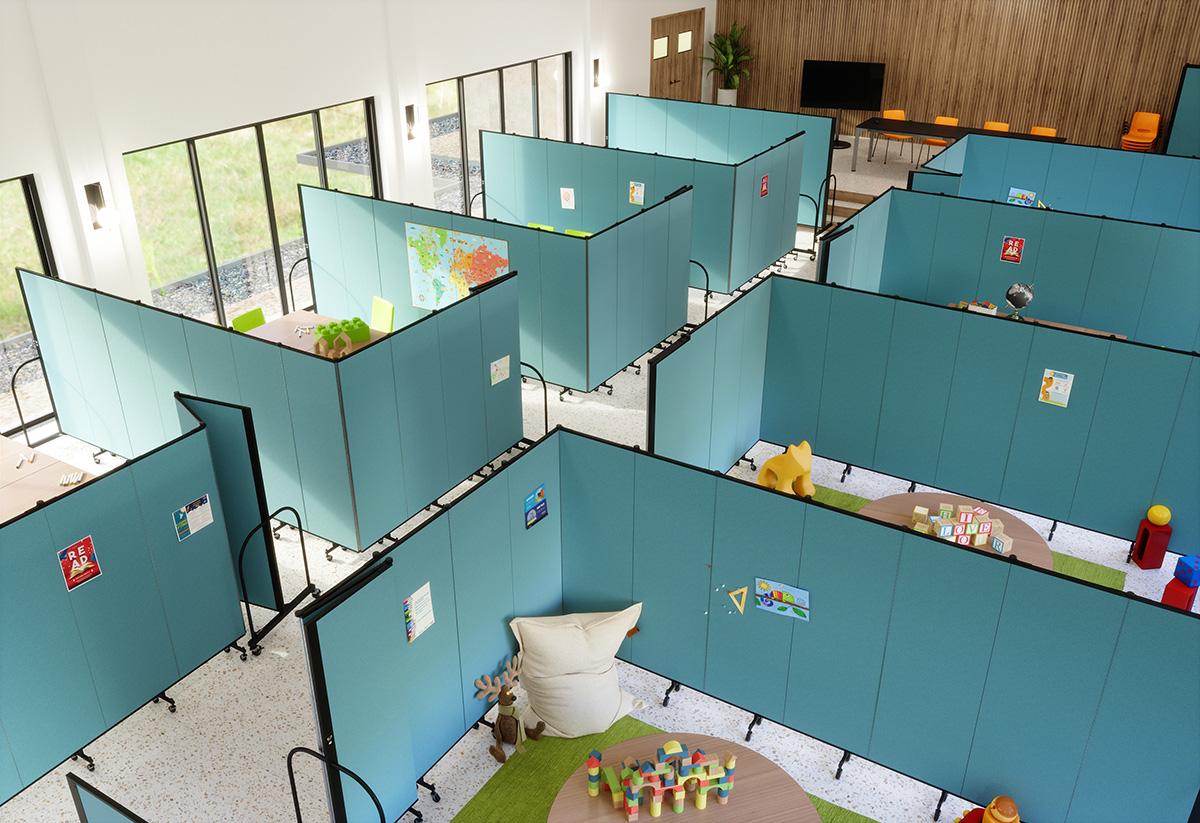7 Strategies for Designing Flexible Learning Spaces in Early Childhood Education
Market: Education
Early childhood education (ECE) isn’t just about learning ABCs and 123s (although those are important too!). Alongside learning, it’s about igniting their creativity, starting connections, fostering discovery, and building the foundation for a bright future. It’s about helping them blossom into curious, confident, and compassionate individuals

By optimizing the environment, educators can create a stimulating and supportive atmosphere where young minds can thrive. Here are seven key strategies to capture the full potential of your early childhood classroom.
Define Learning Zones
Divide your space into distinct zones dedicated to specific activities. Create a cozy and quiet reading nook with soft cushions and picture books, a bustling art area stocked with construction paper, paints, brushes, and crayons, an open area for playtime, and a sensory zone filled with textured surfaces and panels.
Zones can easily be broken up by using room dividers. Screenflex features an array of choices, from Standard Room Dividers to Highpoint Anchored Dividers and Duraflex Canvas Dividers. Add in the Galleria™ Indoor Outdoor Display Board or Display Tower to feature children’s artwork (just make sure to tack or post the artwork at their eye level so they can better see the work).
Set a Calming Atmosphere
Choose neutral colors for walls and backgrounds. Research studies have shown that color influences mood and focus, so use it intentionally to enhance the learning experience. Soft hues like blues and greens promote calmness, while vibrant accents spark energy and curiosity. Note: Too many bright colors can be overwhelming for children. Nature elements, like potted plants or outdoorsy or ocean sounds, can add a relaxing ambiance.
In a room with many children, it can get noisy. For this reason, having acoustical support such as wall panels and flexible or folding sound-absorbing dividers can help mitigate excess noises and distractions. Acoustic wall panels also double as a wall display for more items, allowing you to tack signs, posters, or artwork. Getting them in school colors can also create a fun look to your room.
Embrace Natural Light
Shine a light on learning — literally. Natural light boosts one’s mood, creativity, and brainpower. Optimize your classroom layout to take advantage of available windows. Light-colored walls also help reflect natural daylight, creating a spacious and airy feel. Consider adding adjustable blinds or shades to diffuse harsh sunlight while maintaining natural illumination.
And ditch the harsh fluorescents. Opt for dimmable LED lights or color-changing bulbs to create a dynamic experience, too.

Add Flexible Seating
Furniture in an early childhood classroom should suit the needs of the young learners using it. Ask yourself if the furniture is the right size for children. Offer a variety of seating options to cater to diverse preferences and learning styles — bean bag chairs, floor cushions, stability balls, and more provide young students with the freedom to choose the most comfortable and engaging learning position.
And make sure the adult educators have appropriately sized desks and chairs for them — adults need proper back support and working stations, too!
Be Organized
A well-organized learning environment empowers independence and self-directed learning. Utilize clear bins, labeled shelves, and designated cubbies to store materials neatly and ensure easy accessibility. (Remember, to the young learner’s eye level!) You can group materials by subject or activity to make it easier to find. Consider using color-coded systems within subject areas for further clarity (yellow for arts and crafts or green for math topics, for example).
Tip: Involve children in organizing and maintaining the classroom. This fosters a sense of responsibility and ownership over their learning space.
Consider Traffic Flow
Examine the room’s traffic flow when arranging furniture and learning zones. Ensure easy access to materials and allow ample space for movement and collaboration. Wide walkways between tables allow children to move freely and safely throughout the room.
Incorporate Sensory Elements
Early childhood thrives on engaging the senses. Incorporate textured rugs or panels, color-changing lights, sensory equipment (bubble tubes, fidget toys, fiber optics, interactive panels, etc.), and calming music to create both a stimulating and soothing environment. This space ignites curiosity and exploration, nurturing young minds and well-being.
Remember, an early childhood classroom is an ever-evolving space. By implementing these strategies and adapting them to your unique needs, you can create a stimulating and nurturing environment that empowers your students to envelop themselves in a love of learning and exploring. Begin your design approach by checking out Screenflex’s array of products and reach out to one of our sales consultants with any questions along the way.